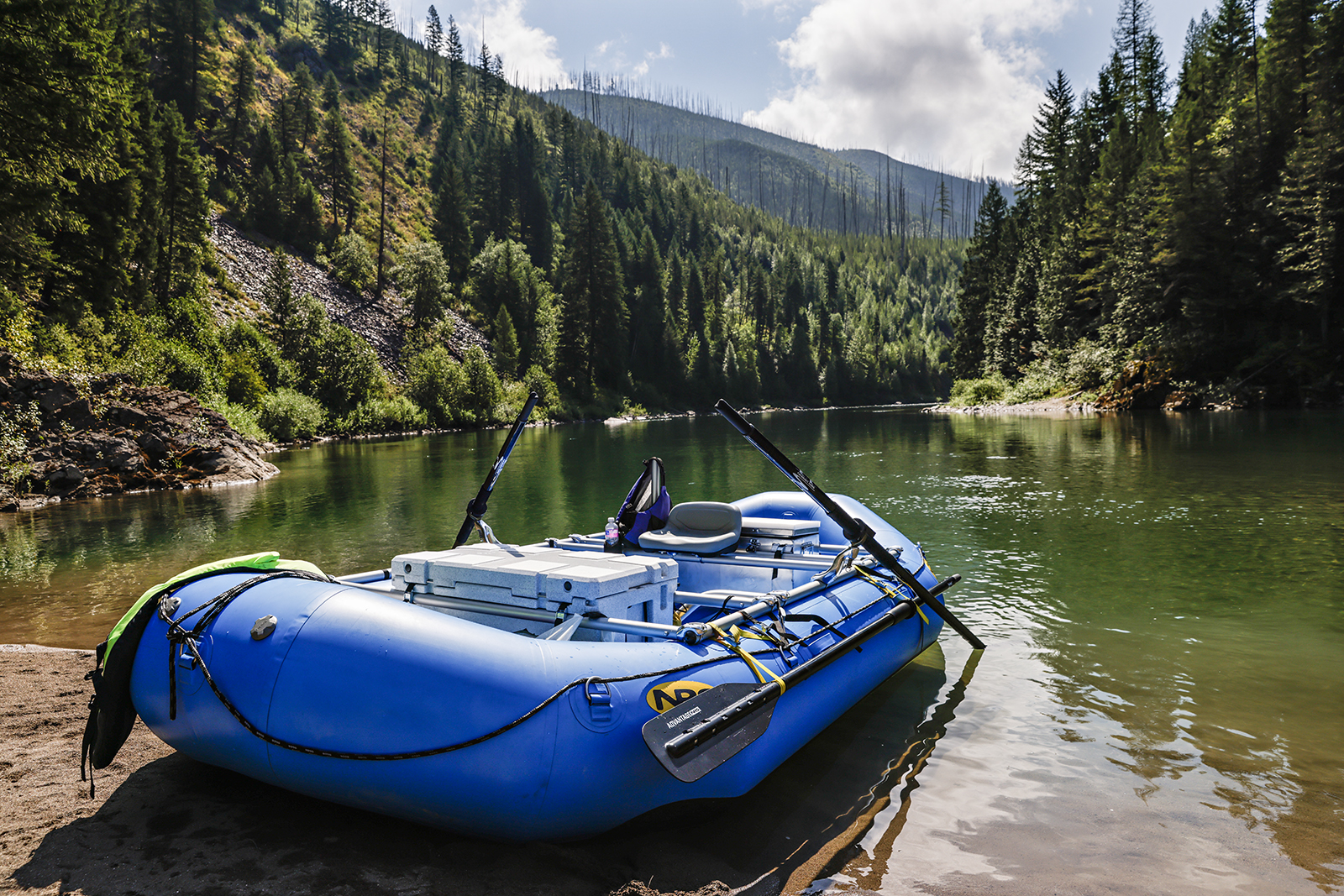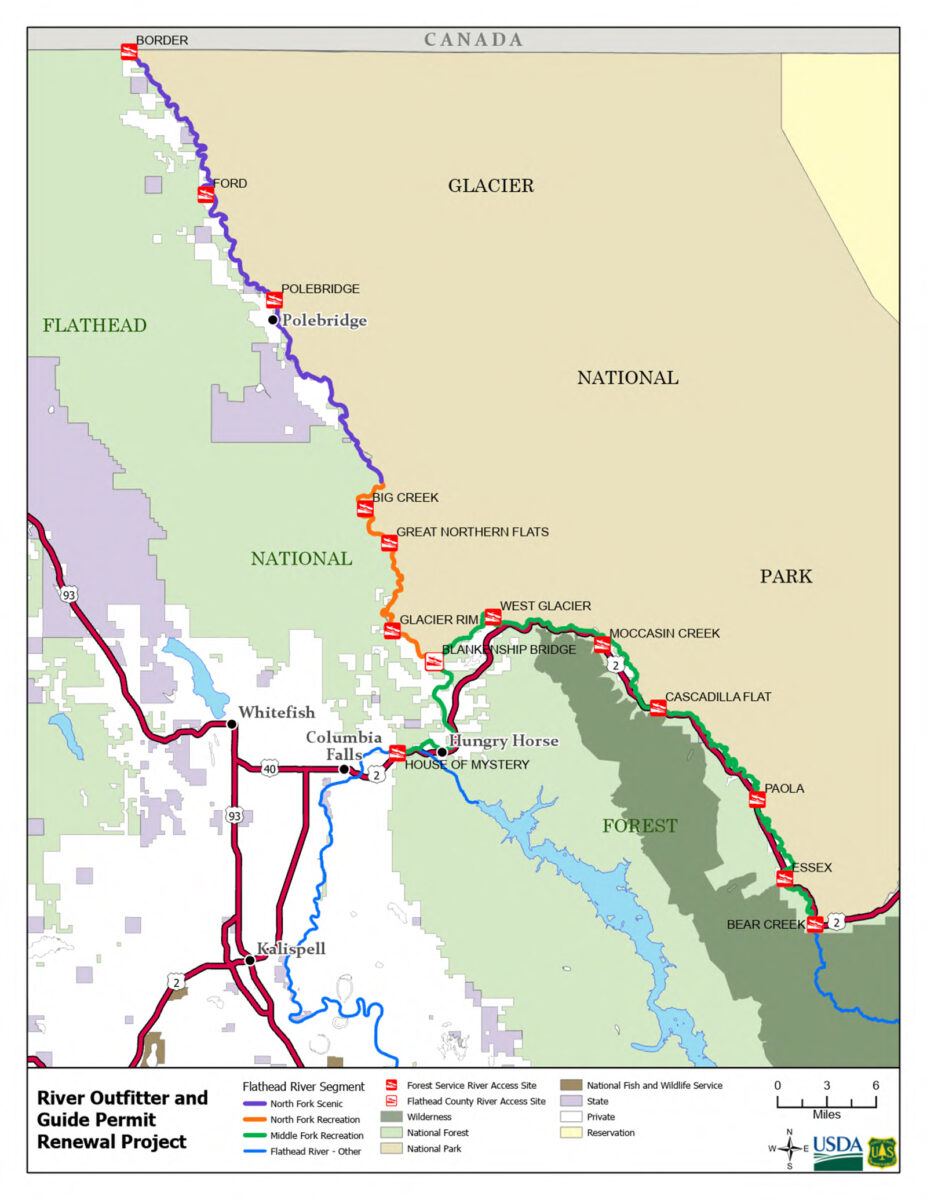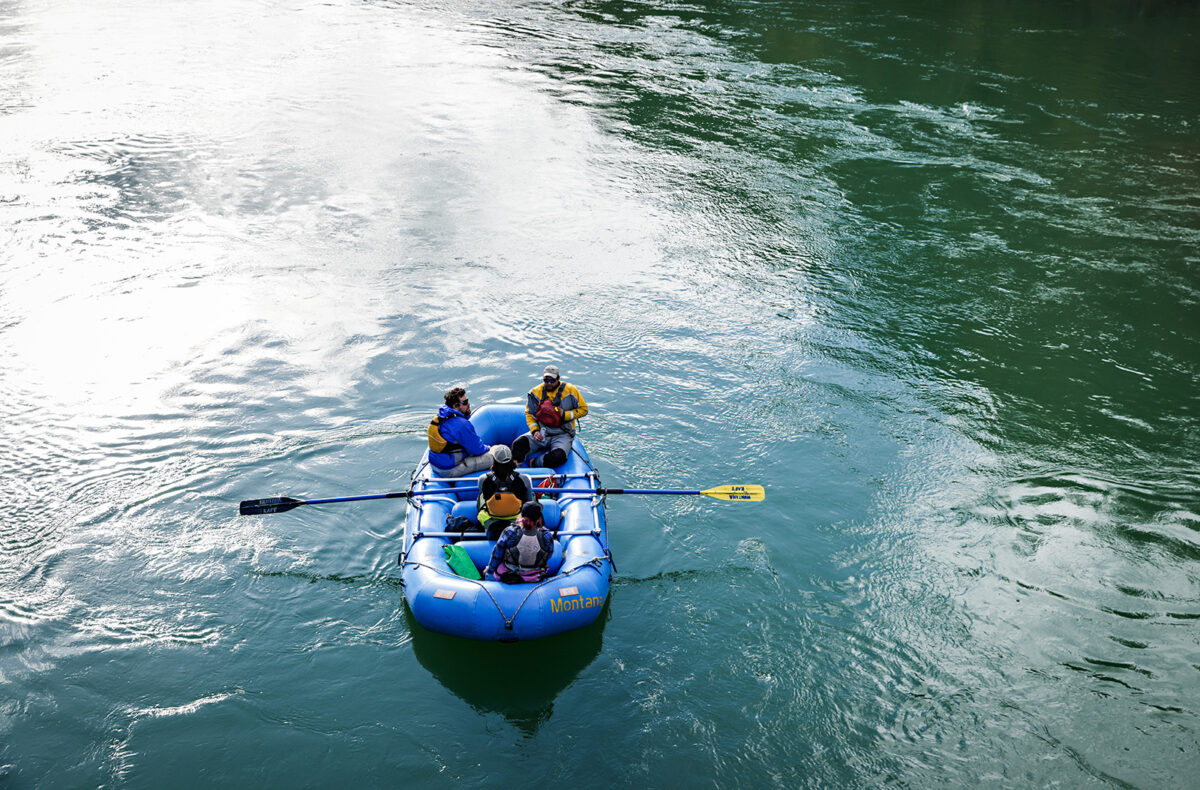Forest Renews Outfitter and Guide Permits on Flathead River’s North and Middle Forks
The Flathead National Forest reauthorized five existing special use permits on the non-wilderness sections of a river system that forms a boundary with Glacier National Park
By Tristan Scott
The Flathead National Forest has renewed five existing outfitter and guide special use permits on the non-wilderness portions of the north and middle forks of the Flathead Wild and Scenic River, which the federal agency jointly manages with Glacier National Park, according to decision notices forest officials published Tuesday.
As the lead agency, Flathead National Forest administers outfitter-guide permits on the Flathead River system. The most recent prior analysis and permit reauthorization occurred in 2014-2015, with those permits set to expire at the end of this month; on April 29, Hungry Horse-Glacier View District Ranger Rob Davies renewed all five permits for a 10-year term.
The outfitter permits pending renewal are:
- Flathead Lutheran Bible Camp
- Glacier Guides and Montana Raft
- Glacier Raft Company
- Great Northern Whitewater Raft
- Wild River Adventures
The permits do not authorize guiding or outfitter activities on the south or middle forks of the Flathead River upstream of the Bear Creek River Access Site, as renewals within the Great Bear Wilderness are conducted under a separate Bob Marshall Wilderness Complex Outfitter and Guide Permit Reauthorization process.
According to Davies, the special-use authorizations afford the public access to a recreation experience in high demand while balancing that use with environmental safeguards for the river system.
“Permitted outfitting and guiding assures that the public has reasonable access to high-quality recreation opportunities,” according to a scoping letter from Davies last September. “Given the skill and equipment needed to run these rivers safely and responsibly, many users require and prefer the services of an outfitter.”
Outfitters and guides on the North and Middle Forks promote and teach river and bear safety practices, resource protection (such as the proper fishing techniques), river etiquette, and the unique attributes of this Wild and Scenic River.
“These permits are a part of both sharing and protecting this national resource,” according to Davies.

The Flathead National Forest evaluated the five applicants’ special-use reauthorization proposals under the National Environmental Policy Act (NEPA). According to Davies, the project met the requirements of categorical exclusion, which is the least intensive form of environmental review and does not require an environmental impact statement (EIS) or an environmental assessment (EA).
Although the permit renewal process did not include the reallocation of additional permits, existing outfitter and guide permits are subject to an amendment process to incorporate new terms that may be required by law. For example, the permits can be amended if the forest implements changes to river management due to a revised river management plan.
Forest and park officials are currently moving forward with overdue updates to the interagency Comprehensive River Management Plan (CRMP). Agency officials anticipate releasing a draft of the plan this summer. Once the draft plan is available for public review, agency officials with the Flathead National Forest and Glacier National Park will initiate the environmental analysis under NEPA, which will include opportunities for public involvement and comment.

While the Lower Middle Fork sees the most commercial use out of all three forks, little would change under the CRMP for the five outfitters who are currently permitted to guide on the river. In the proposed action, total outfitter and guide service days would be set at 86,000 service days on the sections spanning from Cascadilla Creek to Blankenship Bridge. The use limit is currently un-capped.
According to Davies, the Flathead National Forest establishes priority use pools for special use permits, particularly for outfitter and guide services on the non-wilderness portions of the north and middle forks of the Flathead River. These pools provide a designated amount of service days that are available for commercial recreational use. The Forest Service uses these pools to manage and allocate permits while balancing recreation opportunities with the need to protect the natural environment.
Because river monitoring data indicates the Lower Middle Fork is approaching limits established in the 1986 Recreation Management Direction for the Flathead Wild and Scenic River, and because public comments expressed concern about increasing levels of use, Davies explained that he “decided to take a conservative approach to authorizing additional service days from the priority use pool.”
Annually for the Lower Middle Fork, the outfitters may request up to 3% more service days than their previous year’s actual use for this stretch.
“This use will come from the priority use pool,” Davies wrote in his decision notice renewing the permits. “The combined service days (priority and pool days) for all permits can only grow to 86,000 for this stretch, provided monitoring indicates that social and biological conditions are acceptable.”
In 2024, the combined service days for the Lower Middle Fork was 70,826.